Forty years ago yesterday, August 9, Richard Nixon resigned as President of the United States. As I was working on my regular bi-weekly column the day before yesterday, flying at 35,000 feet from Dallas to Los Angeles on a nine city book tour, I thought I would write about the man for whom I worked from over a thousand days, since it was my testimony about his criminal activities that led to that resignation.
About halfway through the column it occurred to me that since I had spent the last four years researching exactly what Nixon had done, and why, a book that has been described by presidential historian Robert Dalleck as “the definitive historical record” of this scandal, a book that Washington Post reporter Bob Woodward, who has been writing and talking about this subject for 42 years, called a “generally dispassionate” and “microscopic” examination of the events that brought down the president, I had another thought.
There is nothing I can say that tops what I set forth in The Nixon Defense: What He Knew and When He Knew It. Accordingly, I decided to condense the book’s Preface for this column. I wrote this book for two audiences: Those who lived through these events but did not get the answers to the key questions about Richard Nixon’s role in Watergate, and those to whom this is ancient history, and who may be wondering why the national media has made the note they have made of Nixon’s resignation. This material that follows will not answer those questions but the book it introduces will do so. Needless to say I was pleased to learn that five days after publication the book has made national bestseller status.
The report of the arrests in the early morning hours of June 17, 1972, of five men who had broken into the Watergate complex offices of the Democratic National Committee (DNC), wearing business suits and surgical gloves, their pockets stuffed with hundred-dollar bills, was something like a scene from a circa 1940s low-budget black-and-white gangsters B movie. This caught-in-the-act stupidity seemed too dumb to be ours, since the undertaking was so conspicuously illegal and inexplicably risky, not to mention obviously bungled. But this political surveillance debacle did turn out to be ours, the work of a ham-fisted team of amateurs assembled by G. Gordon Liddy, a former Nixon White House staff member who was then serving as general counsel of the finance operation of the Committee to Re-elect the President (CRP). This was, in fact, the opening scene of the worst political scandal of the twentieth century and the beginning of the end of the Nixon presidency. It was the start of Watergate, a story that has been told and retold, but never as I am going to tell it in the pages that follow.
The central character in Watergate was, of course, the President of the United States, Richard Nixon. From beginning to end Nixon sought to defend himself and his presidency from the political and legal consequences that followed the arrests at the DNC on June 17, 1972. This is the story of Nixon’s defense, the story I found when trying to understand how someone as politically savvy and intelligent as Richard Nixon, a man who surrounded himself with those he thought the best and brightest, allowed this “third-rate,” bungled burglary to destroy his presidency. The story of the Nixon defense is Richard Nixon’s Watergate story.
Most of Nixon’s Watergate-related activities were secretly self-recorded. These surreptitious recordings eventually revealed that his public Watergatedefenses were colossal deceptions, patent lies that eventually forced his resignation. Nixon’s secret recordings provided much of the overwhelming evidence that sent his former top advisers to prison, not to mention forced his own early retirement. So some of this story has been around for several decades. Investigators and prosecutors, however, were not interested in the context and circumstances of Nixon’s ill-conceived defensive efforts; rather, they focused only on select portions of conversations that could provide evidence establishing wrongdoing beyond a reasonable doubt, so as to end any malfeasance and punish malefactors. Historians, in recounting the Watergate story, have relied largely and almost exclusively on the information gathered by the Watergate investigators and prosecutors. Remarkably, historians and other students of the Nixon presidency have chosen to ignore the full collection of secretly recorded White House conversations relating to Watergate, which slowly but surely have become almost fully available over the past four decades.
Before now, no one has attempted to catalog and transcribe all of Nixon’s Watergate conversations, and to examine and reconstruct this history based on this primary source material, the likes of which has never before existed. The account in the pages that follow is based on this unique collection, and it is presented not as transcripts but rather as narrative and dialogue drawn from and based on them. The story that follows is a first-person account of what I found in this unique historical record. In telling this story I have only edited the transcripts to make them readable and understandable, correcting the obvious anomalies that inevitably occur in spontaneous conversations and often compressing material to report its essence. (Footnote omitted.) Almost all the conversations from which this account is drawn are now available online. (Citations omitted.)
The Nixon defense—both legal and political, because they were inseparable—was assembled behind closed doors in a process that began in the days following the arrests at the Watergate headquarters of the Democratic Party. The first public statement of a defense was made by Nixon on June 22, 1972—that nobody in his White House was involved in this bizarre incident—and Nixon’s final firewall explanation of his defense was issued eleven months later, on May 22, 1973; the latter followed the firing of his top aides, including your author, who had become the centerpiece of his defense. Because I was deeply involved in and later the focus of the Nixon defense, I always hoped someone else would tell this story. I also understood such an undertaking meant the not easily accomplished task of transcribing all of Richard Nixon’s Watergate conversations. Of course, we knew the broad outlines of his activities that led to his resignation, and he did provide some additional details in his memoir. But he, too, relied primarily on conversations that had been transcribed by investigators and prosecutors, leaving most of the historical facts buried in his secretly recorded conversations. Having now transcribed all those conversations, and grasping the content of the newly transcribed material, I understand why he wanted no more information than was already easily available made public, for while this additional information explains many of the activities he was responsible for, those rationales do not redound to Richard Nixon’s glory.
The National Archives and Records Administration (NARA), which Congress charged with the preservation of this historical Nixon material, has prepared, and continues to update and refine as it has released more of the Nixon recordings, a detailed “subject log” highlighting all the content of all the recorded conversations. This can be used to identify topics and the persons addressed, along with times and dates. No one has ever bothered to identify all the Watergate conversations that can be located with these subject logs. Today that can be done digitally. When I did it in 2009, I had to do it manually, which took several months, although given the volume of material, even today it would take almost as long. Depending on how you count them—as it is not always clear when one conversation ends and another begins—there are approximately one thousand Watergate-related conversations. Some of them run only minutes while others run many hours.
In summary, I found (roughly) 447 Watergate conversations had been transcribed. Most were only partials, but a few were of complete conversations, plus the material used in Nixon’s memoir. (More specifically, I found 80 Watergate conversations transcribed by WSPF; 47 by the White House, including those re-transcribed by the House Judiciary Committee; and 320 by Stanley Kutler.) Based on my list of all Watergate conversations, this meant that 634 conversations had never been transcribed by anyone, nor likely even listened to by anyone outside the NARA staff involved in processing them for public release (i.e., removing information that is classified for national security or designated personal/private, such as most of the conversations between the president and his wife or daughters). Because all these transcripts were prepared from analog recordings, and most are only partials, I realized I needed to start from scratch and prepare transcripts of all the conversations myself to really be sure I understood what had occurred. There are good reasons no one had done this. Not only was it not easy to obtain digital copies of it all, but even with them, it is challenging work.
The conversations fall into four general categories, which give form to this story. While not every conversation is quoted, they were all reviewed to write the following: Part I, Covering Up, is based on 35 conversations that occurred between June 20 and July 1, 1972; Part II, Containing, on 158 conversations held from July 2, 1972, through December 1972; Part III, Unraveling, on 110 conversations from January 1973 to March 23, 1973; and Part IV, The Nixon Defense, on 669 conversations from March 23, 1973, to July 16, 1973, when the recording system was dismantled. To give a full picture, other information relevant to the break-in is reported in the Prologue. The Epilogue summarizes events after the recording system was disconnected, on July 16, 1973, when Watergate became Nixon’s fight to prevent the disclosure of his tapes, among other battles. In telling this story, 01which has much new information with which I certainly was never familiar, as a general rule I have not tried to highlight it as such; rather, I have allowed the story to unfold as it happened, only occasionally noting extraordinary new material.
These recordings also largely answer the questions regarding what was known by the White House about the reasons for the break-in and bugging at the Democratic National Committee headquarters, as well as what was erased during the infamous 18 1⁄2-minute gap during the June 20, 1972, conversation and why. Because these questions have had enduring public interest, they are addressed in Appendices A and B. (Appendix C is a listing of Nixon’s Watergate-related recorded conversations, as well as other data. Citation omitted.)
Finally, in assembling this story I have not, except in a few instances, recounted my own involvement in these events, as I already have, first in testimony (in 1973 and 1974) and later in my autobiographical account, Blind Ambition: The White House Years, which was published in 1976. However, when listening to these secretly recorded conversations, or in reading the transcripts, I have recalled countless facts and actions I had forgotten, for the recordings provide information that was not previously available to me. Accordingly, I have, from time to time, flushed out some autobiographical details, usually in endnotes or footnotes, but occasionally in the narrative as well.







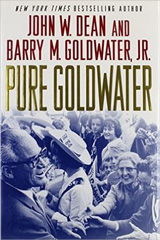
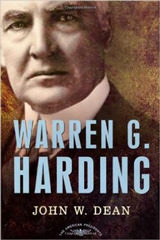
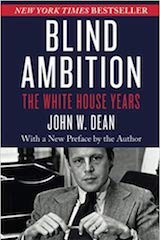
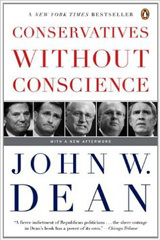
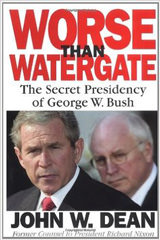
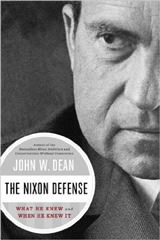
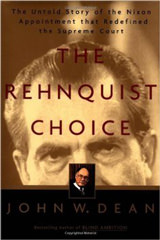

Interesting, but not sure I actually want to read the book, and I feel that I should state why… I basically think the wrong historical lessons were learned from Watergate. It’s obviously a valuable book in many ways, at least to historians, but moot.
The historical evolution of the American government has been towards an increasingly powerful presidency. Of course that was going to result in ever larger abuses of power by the executive branch. From that perspective, Nixon’s misconduct was only the natural outcome, but the constructive solution would have involved learning that the presidency must be more limited.
When Nixon was pardoned, the books were effectively closed on the entire issue of presidential abuse of power. There were a few token responses to limit the most obvious abuses, but the full story was never pursued in the time frame when it would have made sense to do something beyond the token measures.
The actual lesson that the evolving neo-GOP learned was that the president should not be in the loop when criminal actions are “called for” by their private and secret interpretations of the nation’s interests. This led fairly directly to the presidencies of Reagan and the second Bush. Sure there were more misdemeanors and perhaps even a few high crimes, but they were nice guys, starkly unlike Nixon, and if Nixon was never held to account, of course they shouldn’t be.